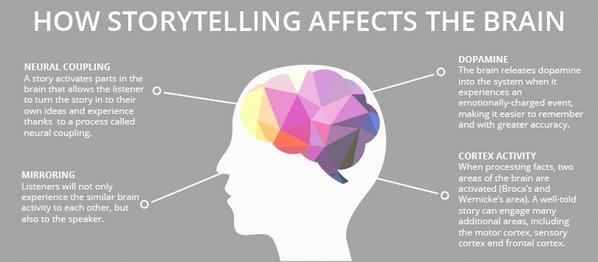Blog
4 Brand Storytelling Mistakes and How to Avoid them

Brands are warming up to idea of telling stories to their audiences and audiences en masse are responding to stories, shared with them by their favorite brands.
But a brand won’t be able to realize the full potential of storytelling if it commits mistakes.
What are the mistakes that brands commit when telling stories? And what are the remedies?
Keep reading to find out.
Quality of stories
Nobody likes to hear a mundane and lackluster story. Telling such a story is equivalent to telling no story, or maybe even worse, hurting your online reputation as a brand. So tell stories that are interesting.
An interesting story has many components to it, not all of which are easy to anatomize. Seemingly, an interesting story is unpredictable. Nobody likes a predictable story. Your audiences are intelligent people and their ability to guess is remarkable. While listening to the story, their minds will navigate through the possible outcomes. You have to beat them in this mind game.
An interesting story creates a permanent place in the listener’s mind. True, a branded story cannot be permanent, but it should be able to make a lasting impact on the audiences, inasmuch as audiences will remember it afterwards.
Connecting the brand
It may sound like a no-brainer. Why should we be bothered about mentioning a brand in the story when the purpose of crafting the story is to promote it? Maybe the story is to espouse the brand, but if the brand is everywhere in the story, then it’d be outright promotion and would cause more harm than good.
The best brand stories are those that exist independently as stories and wherein brands are acknowledged in a relevant context. Here are some great brand stories. Go through these stories and notice how the brands/services/products have fit in.
Audiences don’t feel any emotion when brands pitch their products before them. But a good story can make them emotional. It can make them laugh, feel empathetic, disheartened or contemplate, all the while, preventing their focus to digress from the brand. You need to invest your content marketing skills to write a story like this.
Using visual content
It’s a crime not to tell visual stories to audiences. The power of visual storytelling is immense. Stories affect our brains. Visual stories can amplify this effect.
See the image below:

Notice that brain releases an organic chemical called Dopamine, whenever we are in an emotionally charged situation, thereby stimulating our emotional memory.
Stories dominated by visual content can galvanize the secretion of Dopamine in larger quantities because audiences can see everything through their bare eyes without resorting to imagination. If the story is presented in an audio-visual format, then they can listen to it alongside seeing it.
The story will trigger emotional memory in them and they’ll identify the brand in regard to those memories.
Is there any benefit in that?
Yes. Audiences will unconsciously attach emotions with the brand. Whenever they’ll think of the brand in retrospect, their brains will be plugged with emotions and they’ll isolate the brand from other brands.
This is precisely what every brand wants.
Action statement
Not having an action statement in a brand story is a mistake. There’s a purpose behind telling a brand story and that purpose is promotion, not loud promotion but subtle promotion. Experts believe such promotional techniques are ineffective unless accompanied by action statements.
Action statements are normally found on the lead gen page. But they can also be found in a brand story. When embedded in a story, an action statement cleverly insinuates what would be the best for the audiences, but it never insists them to do that.
The best place for it to occur is at the end of a story, so users can view it as a moral that they could draw from the story. Action verbs complete an action statement. Even though you just need to hint at few things and never say anything out loud, don’t stop from using action verbs; the more, the merrier.
Here are some phrases with action verbs:
- Buying sensibly is caring for money
- Visit the retail store if you want a discount
- Stop wasting money on lousy products
- Take this pill to stay fit
Notice all these phrases are related to buying, spending and choosing a product, indicating these phrases have an undertone that relates to branding. Once again, use your content marketing skills to connect your product/service to action statements.
Overcoming the mistakes
Overcoming the mistakes discussed here is a must for any brand that eyes at leveraging brand storytelling. Thankfully, it’s not difficult to fix these mistakes because the solutions are also suggested.
Image Courtesy: www.linkedin.com

Adam Frankel
Adam Frankel is President and CEO of Frankel Interactive, a leading South Florida digital agency specializing in custom websites development, ecommerce development and digital marketing. For over 15 years he's been working with businesses and government agencies to bring their organizations online in order to build brand awareness, communicate with stakeholders, generate leads and drive sales. His belief is that all businesses need to keep up with technological trends including the continual transition from desktop to mobile, search engine algorithms changes, and social media engagement. His goal is to help them implement strategies to successfully compete in an ever crowding digital marketplace. When he isn't touting the benefits of web-based marketing, he enjoys fishing and spending time on the waters surrounding Miami with family and friends.
